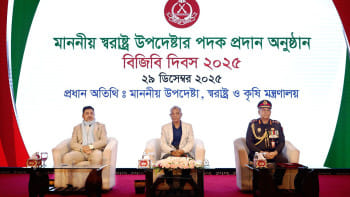Remembering Lieutenant Samir Das

Samir Das was a Bengali belonging to a middle class family of Calcutta. He was born in Banaras, Uttar Pradesh in India. He completed his postgraduate in Geology from Banaras University. He was a keen sportsman and a state level football player. He joined Indian Navy in April 1966 as a commissioned officer. A quiet person by nature and a complete gentleman, he was soft-spoken. He showed promises to be an excellent officer of Indian Navy.
Lt. Samir Das qualified as a Ship Diving Officer in 1968. In 1969, for the first time Indian Navy started conducting Clearance Diving Officers (CDO) course. At that time, he was selected for the course and qualified as CDO. Due to his consistent good performance in the course, he was sent for Long Mine Clearance Diving Officers (LMCDO) course with Royal Navy in UK. During the LMCDO training, Das was attached to HMS Vernon at Portsmouth. He performed very well and also represented HMS Vernon for Intra Royal Naval Football Championship. As a fine officer and sportsman, he earned appreciation of his peers. He completed LMCDO with high grade and returned to India to join as an instructor in Naval Diving School in Cochin. He received the prestigious Nau Sena Medal for his contribution to diving operations in 1970. During the training period, he suggested development of limpet mines which was later accepted by Indian Navy. The Navy adopted his ideas of the limpet mines which proved to be strong weapons in the riverine warfare of the Indian Navy.

In early April 1971, eight Bengali submariners of Pakistan Navy escaped from France via Spain to New Delhi with the help of Indian authorities. They were part of the commissioning a new Pakistani submarine being acquired from France. These submariners pledged their loyalty to the Bangladesh government and expressed their firm desire to join the Mukti Bahini. Initially, decision was taken to train the submariners as naval commandos in the Jamuna River near Delhi. This would form the basis of the Bangladesh Navy. Lt. Das, who was at that time in the Naval Diving School at Cochin as an instructor, was called upon to join the naval commando training camp in Delhi to run the newly formed training centre. The training effort was kept highly confidential as it was a closely guarded matter.
In the middle of April 1971, Indian and Bangladesh forces decided to expand the training facilities for the naval commandos. There were hundreds of young men who were excellent swimmers from the rural areas of Bangladesh who could be trained as naval commandos. They were looking for a training area with more facilities. The bordering areas of Bangladesh were being considered. Lt. Das along with Lt. Vijay P. Kapil under the leadership of Commander MNR Samant visited Diamond Harbour, Sundarban areas and Plassey. Plassey, near the Bhagirathi River, was selected as the training centre. Captain Samant was made the commandant of the camp and Lt. Kapil and Lt. Das along with other officers were posted as instructors.
Lt. Das played a key role in the selection of the training areas and preparation of the training programme. The area was suitable for training as it was in an isolated area away from civilian populations which allowed for training on explosives and small arms. Also, the river had flowing water with medium currents favourable for required training.
In 1960s, there was a shortage of limpet mines in the Indian Navy as they were imported ordinance. Therefore, there was an urgent need for development and production of limpet mines in large numbers. The main problem was of the availability of the timer mechanism. Lt. Das along with his colleagues developed soluble plugs which worked as delay mechanism for the depth chargers. They developed the idea of basically using covers over the soluble plugs and removing them after attaching the limpet mine to the target which allowed the delay in detonation.
Lt. Das devotedly trained the Mukti Bahini naval commandos who had conducted a large number of successful operations all over Bangladesh. Their operations created havoc with the Pakistani forces as they faced heavy casualties in the sea and river ports of Bangladesh and suffered in terms of men and materials.
In July 1971, Lt. Das completed training of a few batches of naval commandos. He was instructed to undertake a number of reconnaissance missions with the Mukti Bahini officers on future operation plans. He used to hold detailed meetings with them. On September 26, he went to attend a meeting with Commander 101 Communication Zone Major General Gurbax Singh Gill and Commander of Sector 7 Major Nazmul Haque, at Shiliguri. After holding detailed meetings, he along with Major Nazmul Haque were returning to Maldah at night. In the dead of the night, the vehicle carrying the officials met with an accident in which both Lt. Das and Major Haque were killed. Eventually, his body was flown to Calcutta where it was cremated with full military honour. His ashes were taken to Cochin and scattered in the Ernakulam Channel.
Lt. Das devotedly trained the Mukti Bahini naval commandos who had conducted a large number of successful operations all over Bangladesh. Their operations created havoc with the Pakistani forces as they faced heavy casualties in the sea and river ports of Bangladesh and suffered in terms of men and materials. These operations drew the attention of the world press and earned admiration of the freedom loving people all over the world.
Lt. Samir Das relentlessly worked to select, train and motivate young Mukti Bahini naval commandos and turned them into professional brave naval commandos. His contributions to the naval commandos of Mukti Bahini are unforgettable.
The writer is a Freedom Fighter, recipient of Swadhinata Padak and a researcher on Liberation War.

 For all latest news, follow The Daily Star's Google News channel.
For all latest news, follow The Daily Star's Google News channel. 



Comments